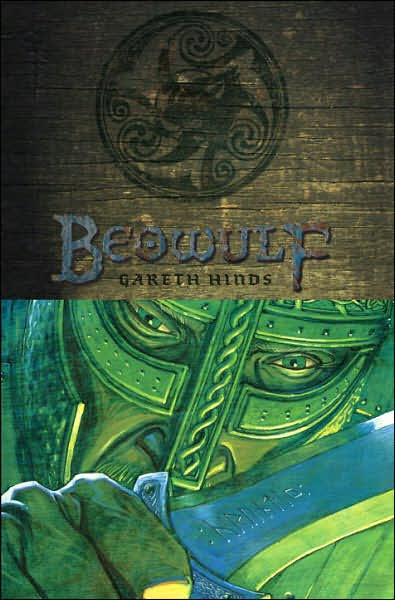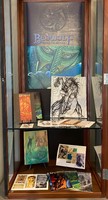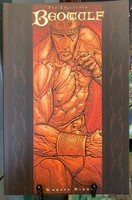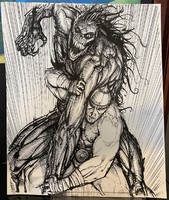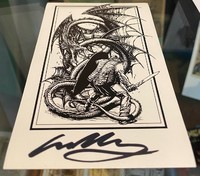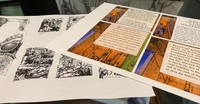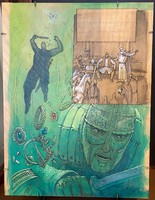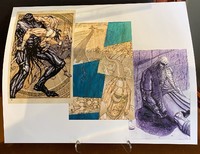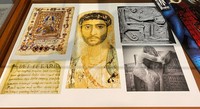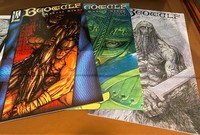Beowulf is an epic poem, written by an unknown author, most likely between the 9th and 11th century. It is one of the most important, most studied, and most translated works of Old English, the language spoken in Anglo-Saxon England before the Norman Conquest. Set in pagan Scandinavia and consisting of three sections, the poem relates the wondrous exploits of its hero, Beowulf, who battles with the monsters Grendel, Grendel's revengeful mother, and a dragon guarding a treasure.
Among the challenges Gareth Hinds addressed in in his adaptation were:
Translations
Hinds compared more than two dozen available translations (in print or archived online) before selecting the Francis B. Gummere verse translation as the basis for his script (Heaney and Tolkien were not yet available). When Candlewick Press re-issued the book, Hinds worked with editor Deb Noyes to create a more accessible text based on the prose translation by A.J. Church.
Ancient Art
Wanting the art to evoke the time period when Beowulf was composed, Hinds based his art style on three ancient art forms: the illuminated manuscript (ink on parchment with calligraphy), the funeral portraits of Fayum, Egypt (painted on wood panels), and stone sculpture, especially relief sculpture associated with memorials.
Monsters
The text does not describe in detail the three monsters Beowulf fights. Hinds’ designs are based primarily on their abilities and on the symbolism each presents to Beowulf: Grendel is super-strong and immune to weapons, so he has a muscular, metallic appearance, and he personifies rage and hunger, so his face is mostly jagged fangs. Grendel’s Mother lives underwater, so she has a frog-like appearance, and she represents motherhood, so she is shaped like ancient fertility statues. The dragon is ancient and represents time and mortality, so it appears as a primordial, Oroboros-like serpent.
Hinds’ exciting adaptation, faithful to the literary classic, garnered high praise from reviewers:
“A first-rate horror yarn… Hinds stages great fight scenes, choreographing them like kung-fu master… Visceral.” -- The New York Times Book Review
“Retells the old tale as a series of dark, bloody, chaotic clashes… A strongly atmospheric alternative.” -- Kirkus Reviews
To view any of the exhibit objects in more detail, click on the thumbnail below.
